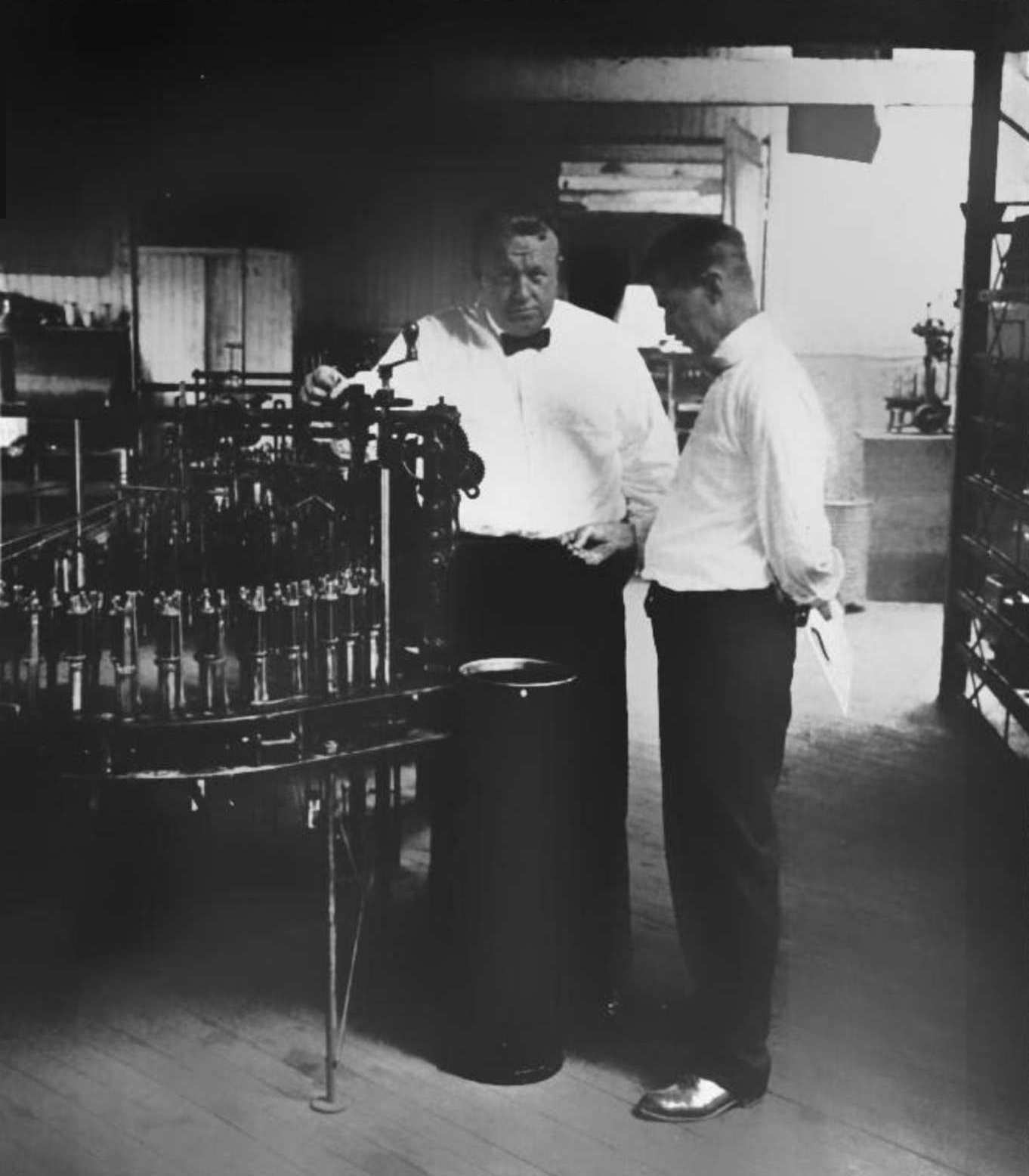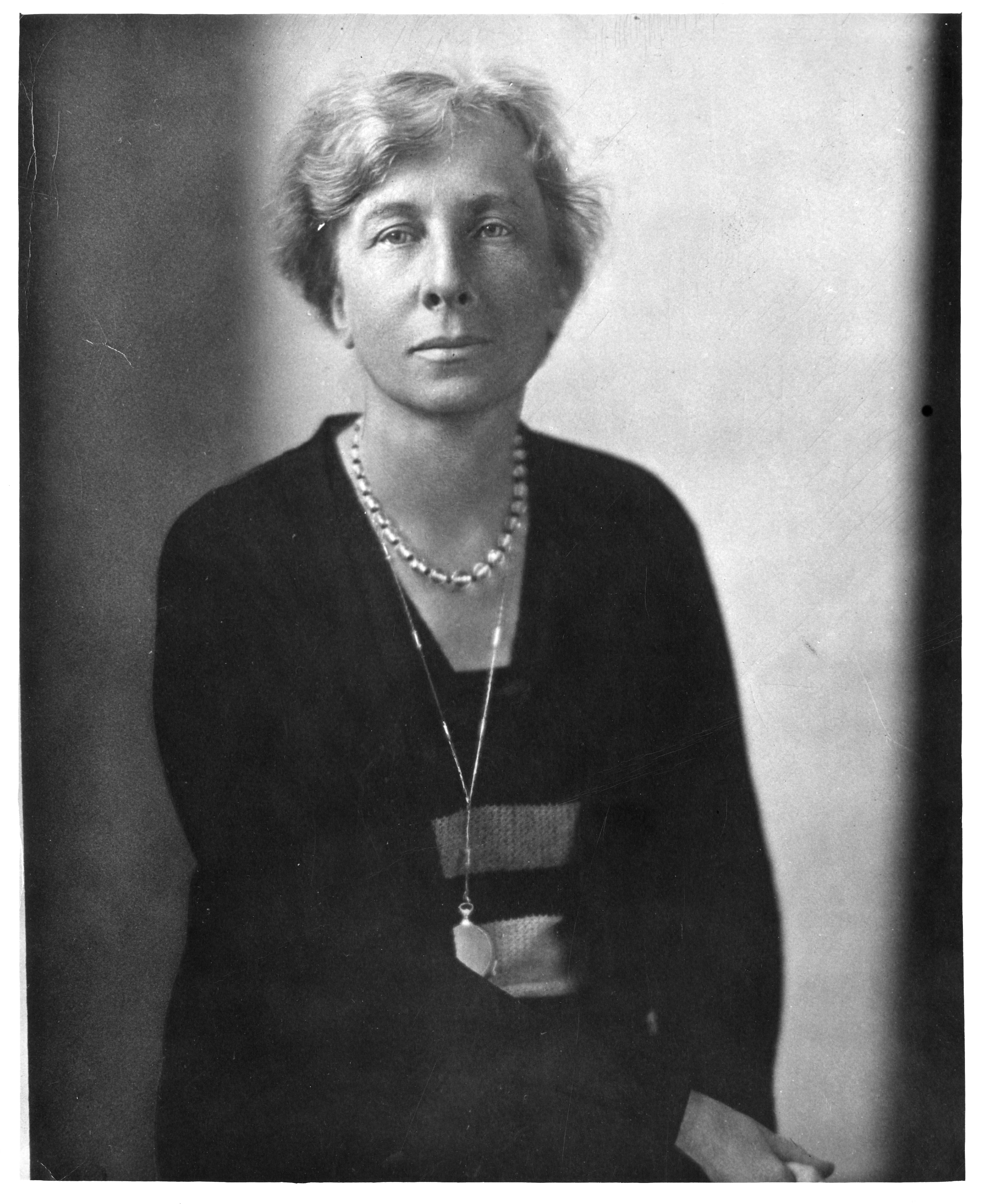|
Gilbreth, Inc.
Gilbreth, Inc. was the early management consulting and industrial engineering firm of Frank Bunker Gilbreth and his wife Lillian Moller Gilbreth. It was founded as Frank B. Gilbreth, Inc., consulting engineers, in 1911. Lillian renamed it Gilbreth, Inc. after Frank's death in 1924. The firm's methodology focused on efficiency through a "Time and Motion" approach, better known as motion studies. Its analysis and reports included reduction of effort and fatigue, with precursors to ergonomics. The resulting recommendations focused on "one best way," an approach at odds with the later quality improvement movement. The Gilbreth approach also diverged from Taylorism, another early business/work efficiency model, primarily in its consideration of human factors. Gilbreth Inc.'s innovations were largely due to the marriage of engineering and industrial psychology reflected from its founders, who were respective experts in these fields. In 1904 the firm moved to New York City, in 1912 to Pro ... [...More Info...] [...Related Items...] OR: [Wikipedia] [Google] [Baidu] |
Management Consulting
Management consulting is the practice of providing consulting services to organizations to improve their performance or in any way to assist in achieving organizational objectives. Organizations may draw upon the services of management consultants for a number of reasons, including gaining external (and presumably objective) advice and accessing consultants' specialized expertise regarding concerns that call for additional oversight. As a result of their exposure to and relationships with numerous organizations, consulting firms are typically aware of industry "best practices". However, the specific nature of situations under consideration may limit the ability or appropriateness of transferring such practices from one organization to another. Management consulting is an additional service to internal management functions and, for various legal and practical reasons, may not be seen as a replacement for internal management. Unlike interim management, management consultants do ... [...More Info...] [...Related Items...] OR: [Wikipedia] [Google] [Baidu] |
Industrial Engineering
Industrial engineering (IE) is concerned with the design, improvement and installation of integrated systems of people, materials, information, equipment and energy. It draws upon specialized knowledge and skill in the mathematical, physical, and social sciences together with the principles and methods of engineering analysis and design, to specify, predict, and evaluate the results to be obtained from such systems. Industrial engineering is a branch of engineering that focuses on optimizing complex processes, systems, and organizations by improving efficiency, productivity, and quality. It combines principles from engineering, mathematics, and business to design, analyze, and manage systems that involve people, materials, information, equipment, and energy. Industrial engineers aim to reduce waste, streamline operations, and enhance overall performance across various industries, including manufacturing, healthcare, logistics, and service sectors. Industrial engineers are employe ... [...More Info...] [...Related Items...] OR: [Wikipedia] [Google] [Baidu] |
Frank Bunker Gilbreth
Frank Bunker Gilbreth (July 7, 1868 – June 14, 1924) was an American engineer, consultant, and author known as an early advocate of scientific management and a pioneer of time and motion study, and is perhaps best known as the father and central figure of '' Cheaper by the Dozen''. Both he and his wife Lillian Moller Gilbreth were industrial engineers and efficiency experts who contributed to the study of industrial engineering in fields such as motion study and human factors. Biography Early life and education Gilbreth was born in Fairfield, Maine, on July 7, 1868. He was the third child and only son of John Hiram Gilbreth and Martha Bunker Gilbreth. His mother had been a schoolteacher. His father owned a hardware store and was a stockbreeder. When Gilbreth was three and a half years old his father died suddenly from pneumonia. After his father's death his mother moved the family to Andover, Massachusetts, to find better schools for her children. The substantial ... [...More Info...] [...Related Items...] OR: [Wikipedia] [Google] [Baidu] |
Lillian Moller Gilbreth
Lillian Evelyn Gilbreth (; May 24, 1878 – January 2, 1972) was an American psychologist, industrial engineer, consultant, and educator who was an early pioneer in applying psychology to time and motion study, time-and-motion studies. She was described in the 1940s as "a genius in the art of living." Gilbreth, one of the first female engineers to earn a Doctor of Philosophy, Ph.D., is considered to be the first industrial and organizational psychology, industrial/organizational psychologist. She and her husband, Frank Bunker Gilbreth, were efficiency experts who contributed to the study of industrial engineering, especially in the areas of time and motion study, motion study and human factors. ''Cheaper by the Dozen'' (1948) and ''Belles on Their Toes'' (1950), written by two of their children (Ernestine Gilbreth Carey, Ernestine and Frank Bunker Gilbreth Jr., Frank Jr.) tell the story of their family life and describe how time-and-motion studies were applied to the organizatio ... [...More Info...] [...Related Items...] OR: [Wikipedia] [Google] [Baidu] |
Quality Improvement
Total Quality management (TQM), ensures that an organization, product, or service consistently performs as intended, as opposed to Quality Management, which focuses on work process and procedure standards. It has four main components: quality planning, quality assurance, quality control, and quality improvement. Customers recognize that quality is an important attribute when choosing and purchasing products and services. Suppliers can recognize that quality is an important differentiator of their offerings, and endeavor to compete on the quality of their products and the service they offer. Thus, quality management is focused both on product and service quality. Advancement In earlier periods, arts and crafts were led by master craftspeople or artists who supervised studios, trained apprentices, and oversaw the product development process. With the advent of the Industrial Revolution, steam engines, and mass production, the role of craftspeople diminished. The new approach enab ... [...More Info...] [...Related Items...] OR: [Wikipedia] [Google] [Baidu] |
Taylorism
Scientific management is a theory of management that analyzes and synthesizes workflows. Its main objective is improving economic efficiency, especially labor productivity. It was one of the earliest attempts to apply science to the engineering of processes in management. Scientific management is sometimes known as Taylorism after its pioneer, Frederick Winslow Taylor. Mitcham, Carl and Adam, Briggle ''Management'' in Mitcham (2005) p. 1153 Taylor began the theory's development in the United States during the 1880s and 1890s within manufacturing industries, especially steel. Its peak of influence came in the 1910s. Although Taylor died in 1915, by the 1920s scientific management was still influential but had entered into competition and syncretism with opposing or complementary ideas. Although scientific management as a distinct theory or school of thought was obsolete by the 1930s, most of its themes are still important parts of industrial engineering and management today. ... [...More Info...] [...Related Items...] OR: [Wikipedia] [Google] [Baidu] |
New York City
New York, often called New York City (NYC), is the most populous city in the United States, located at the southern tip of New York State on one of the world's largest natural harbors. The city comprises five boroughs, each coextensive with a respective county. The city is the geographical and demographic center of both the Northeast megalopolis and the New York metropolitan area, the largest metropolitan area in the United States by both population and urban area. New York is a global center of finance and commerce, culture, technology, entertainment and media, academics, and scientific output, the arts and fashion, and, as home to the headquarters of the United Nations, international diplomacy. With an estimated population in 2024 of 8,478,072 distributed over , the city is the most densely populated major city in the United States. New York City has more than double the population of Los Angeles, the nation's second-most populous city. [...More Info...] [...Related Items...] OR: [Wikipedia] [Google] [Baidu] |
Providence, Rhode Island
Providence () is the List of capitals in the United States, capital and List of municipalities in Rhode Island, most populous city of the U.S. state of Rhode Island. The county seat of Providence County, Rhode Island, Providence County, it is one of the oldest cities in New England, founded in 1636 by Roger Williams, a Reformed Baptist theologian and religious exile from the Massachusetts Bay Colony. He named the area in honor of "God's merciful Providence" which he believed was responsible for revealing such a haven for him and his followers. The city developed as a busy port, as it is situated at the mouth of the Providence River at the head of Narragansett Bay. Providence was one of the first cities in the country to industrialize and became noted for its textile manufacturing and subsequent machine tool, jewelry, and silverware industries. Today, the city of Providence is home to eight hospitals and List of colleges and universities in Rhode Island#Institutions, eight instit ... [...More Info...] [...Related Items...] OR: [Wikipedia] [Google] [Baidu] |
Montclair, New Jersey
Montclair is a Township (New Jersey), township in Essex County, New Jersey, Essex County in the U.S. state of New Jersey. Situated on the cliffs of the Watchung Mountains, Montclair is a commercial and cultural hub of North Jersey and a diverse bedroom community of New York City within the New York metropolitan area. The township is the home of Montclair State University, the state's second-largest university. As of the 2020 United States census, the township's population was 40,921, an increase of 3,252 (+8.6%) from the 2010 United States census, 2010 census count of 37,669, which in turn reflected a decline of 1,308 (−3.4%) from the 38,977 counted in the 2000 United States census, 2000 census. As of 2010, it was the List of municipalities in New Jersey, 60th-most-populous municipality in New Jersey. History Montclair was initially formed as a Township (New Jersey), township on April 15, 1868, from portions of Bloomfield, New Jersey, Bloomfield Township, so that a second rai ... [...More Info...] [...Related Items...] OR: [Wikipedia] [Google] [Baidu] |
Consulting Firms Established In 1895
A consultant (from "to deliberate") is a professional (also known as ''expert'', ''specialist'', see variations of meaning below) who provides advice or services in an area of specialization (generally to medium or large-size corporations). Consulting services generally fall under the domain of professional services, as contingent work. The Harvard Business School defines a consultant as someone who advises on "how to modify, proceed in, or streamline a given process within a specialized field". Subject-matter expert vs. consultant According to ''Institute of Management Consultants USA'', "The value of a consultant s compared to a subject-matter expert (SME)is to be able to correctly diagnose and effectively transform an often ill-defined problem and apply information, resources and processes to create a workable and usable solution. Some experts are good consultants and vice versa, some are neither, few are both." Another differentiation would be that a consultant sells advi ... [...More Info...] [...Related Items...] OR: [Wikipedia] [Google] [Baidu] |
Companies Based In New Jersey
A company, abbreviated as co., is a Legal personality, legal entity representing an association of legal people, whether Natural person, natural, Juridical person, juridical or a mixture of both, with a specific objective. Company members share a common purpose and unite to achieve specific, declared goals. Over time, companies have evolved to have the following features: "separate legal personality, limited liability, transferable shares, investor ownership, and a managerial hierarchy". The company, as an entity, was created by the State (polity), state which granted the privilege of incorporation. Companies take various forms, such as: * voluntary associations, which may include nonprofit organizations * List of legal entity types by country, business entities, whose aim is to generate sales, revenue, and For-profit, profit * financial entities and banks * programs or educational institutions A company can be created as a legal person so that the company itself has limi ... [...More Info...] [...Related Items...] OR: [Wikipedia] [Google] [Baidu] |






